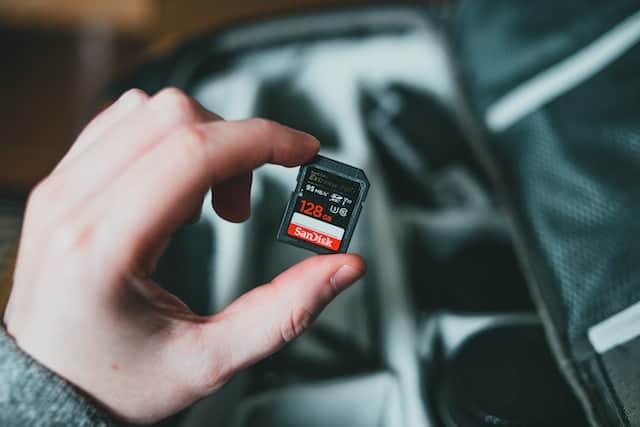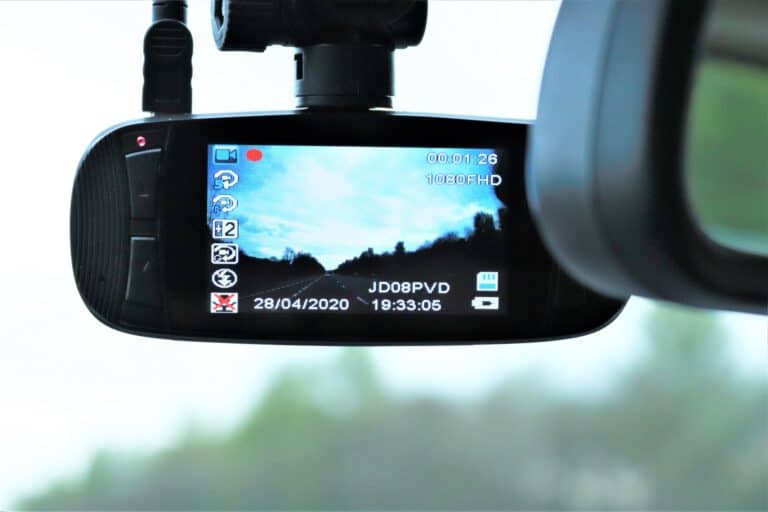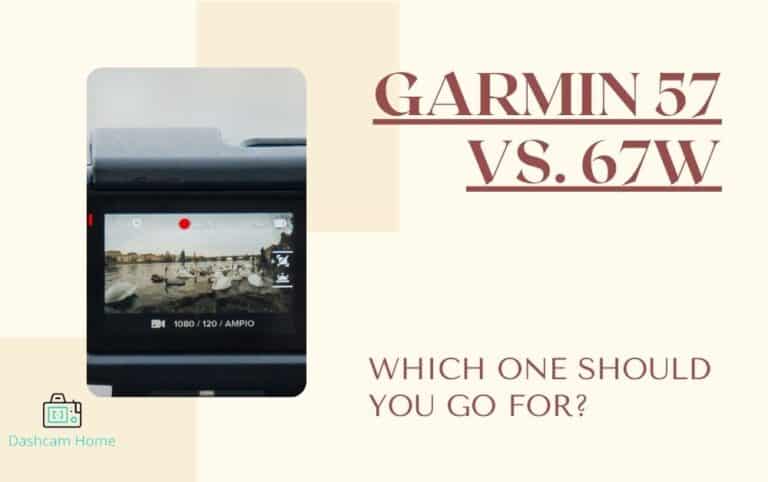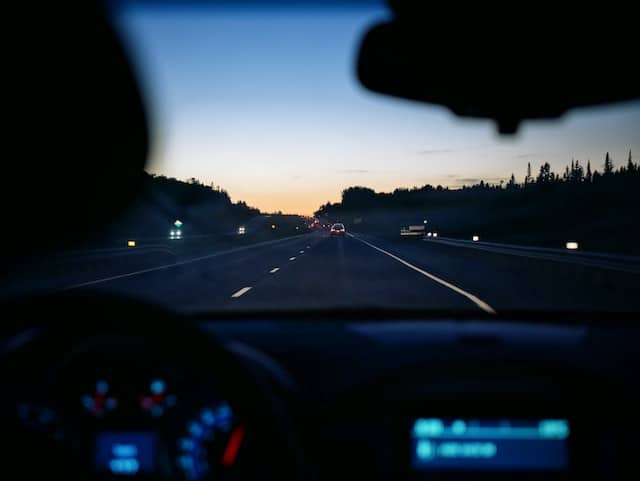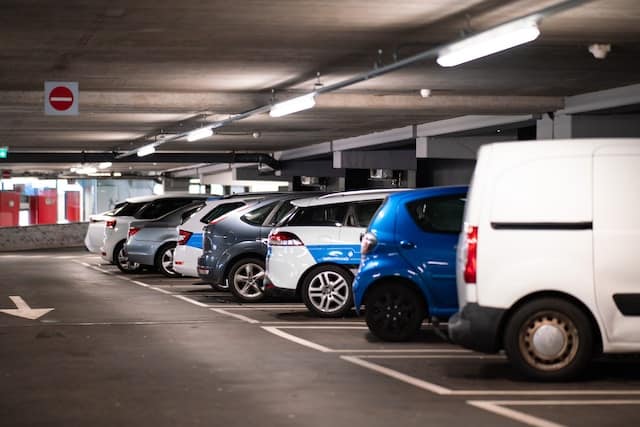What To Look For In A Dashcam? The Ultimate Buying Guide
Have you ever been in a car accident? If yes, you must know how hard it is to navigate through insurance claims and police investigations.
Honestly, it’s impossible to steer clear of accidents and the following investigations. Still, the process can be made simpler with a dash cam. Many people use dashcams on their vehicles to gain evidence in case of theft, but they can also be used to collect evidence for insurance claims after an accident.
A dash cam is a short form of dashboard camera that’s installed within the vehicle – it captures still images as well as videos and saves everything to a connected device or an SD card for use.
However, hundreds, if not thousands, of dashcams are available on the market, making it challenging to choose one. So, to help you get the best bang for your buck, we are sharing what you must look for in a dash cam!
Table of Contents
- Top Features To Consider While Purchasing A Dash Cam
- 1. Video Quality & Resolution
- 2. FOV (Field Of View)
- 3. Battery
- 4. Night Vision Or Night-Time Recording
- 5. Single Or Multi-Lens Dash Cam
- 6. Storage Space
- 7. Wi-Fi Connectivity
- 8. Display
- 9. Mounting Technique
- 10. Audio Recording
- 11. Availability of Parking Mode
- 12. Dual Channel or Single Channel
- 13. Additional Features
- The Bottom Line
- FAQs
Top Features To Consider While Purchasing A Dash Cam
To begin with, you’ve to be clear about your budget because the dash cams with advanced features, cloud storage, and 4K resolution will be $100 or higher. Once you have the budget, consider the following features to ensure the videos and images it captures can help you in case of theft, accidents, or vehicle damage.
1. Video Quality & Resolution
Video resolution is one of the most crucial factors to consider, as it impacts the quality of videos and still images. The majority of dash cams available in the market have 1080p resolution, but the premium ones have 4K. In addition, some of them as 2K resolution, and to choose one, it’s important to know the best possible resolution.
The 1080p resolution is the lowest, even though it promises exceptional quality. However, these images can sometimes be blurry, such as the number plates of the other vehicles might not be clear.
Secondly, the 2K resolution promises better image clarity as compared to 1080p. It can capture a clear and accurate image of street signs and number plates – these details are crucial to win the claims.
Lastly, the 4K resolution is the best option. Even when the footage is zoomed out, it promises accurate imaging and captures the smallest details. However, some brands use low-quality chipsets, which makes it impossible to zoom out the footage.
For this reason, you should select the dash cam with native 4K resolution, as it promises zero blurring and capturing details in low-light conditions. You can ask the shopkeeper to show you a dash cam with native 4K resolution.
2. FOV (Field Of View)
The field of view is also known as the viewing angle. If the dash cam has a narrow FOC, there are higher chances of the camera missing the important details. For this reason, the dash camera you choose must have a FOV ranging from 120 degrees to 160 degrees. Ideally, it should cover the entire windshield of the vehicle.
Also, you shouldn’t go beyond 160 degrees view either because it negatively impacts the video quality around the edges (it can tarnish the evidence). Usually, the dash cams have 140 degrees FOV, which is good too – it will capture all the important detail without any distortion or blurring on the edges.
3. Battery
The old dash cams were designed to work on the vehicle’s battery, which means they would record the videos and capture still images only when the vehicle is turned on (when the engine is running). However, such dash cams aren’t suitable for protection against vandalism and theft, as these happen when the vehicle owner isn’t around, and the vehicle is turned off.
These dash cameras will keep recording even when the vehicle is off or parked. For this reason, purchasing a dash cam with a built-in battery is better. It’s recommended that you connect the dash cam with a battery pack because the built-in batteries don’t last long. The battery packs can help extend the recording time to over 20 hours.
4. Night Vision Or Night-Time Recording
Night vision has become an essential feature as it increases exposure, making it possible to record as many details as possible, irrespective of the lighting condition. The night vision cameras allow users to determine who is accessing their vehicles at night. In addition, it helps avoid accidents by offering a clear road view.
The night vision feature also minimizes light pollution and captures clear footage. The only issue with night vision is that the details aren’t colored, but it doesn’t matter as long as you can see the details, such as number plates and road signs.
You can also consider a dash cam with HDR or WDR capabilities. We’ve previously discussed what WDR technology is.
5. Single Or Multi-Lens Dash Cam
The majority of basic dash cams have only one lens for capturing images and videos, but they don’t capture many details. Instead, it’s better to purchase a multi-lens cam as it can cover the vehicle’s interior as well as the road simultaneously. In simpler words, the multi-lens cams offer 360-degree coverage of the vehicle and road.
Also, the multi-lens cams have two or four cameras. The two-lens cameras are suitable for getting the rear and front coverage of the vehicle, while four-lens cameras offer 360 degrees views. Some multi-lens cams are integrated with a driver monitoring feature, which keeps an eye on the driver’s condition and issues a warning if the driver is having an issue driving or dozing.
So, ideally, you should use the multi-lens dash cam, particularly the one with four lenses, to get maximum footage.
6. Storage Space
The dash cams are designed to record and store the videos automatically into the camera or the installed SD card. However, some of them also transfer video files to cloud storage. If you drive five days a week for two hours and the camera captures 1080p videos, it’s recommended that you use the 64GB SD card.
Many people depend on the internal storage of the dashcam. But they don’t have more than 32GB of storage. So it’s best to extend the storage space with a high-quality SD card, as your SD card decides how long the dash camera records for. However, if you want to record even when the vehicle is off the road and parked, you should consider purchasing an SD card with 512GB storage. It will help you will record and save a maximum number of videos.
7. Wi-Fi Connectivity
The recent models of dashcams are designed with a Wi-Fi feature, allowing users to connect the dashcam to their smartphone, so they can access the video recordings whenever they want. In addition, the Wi-Fi feature helps download video recordings into the smartphone. It takes away the hassle of removing the SD card from the card to transfer the video files to the laptop or phone.
In simpler words, it doesn’t impact video capturing and is a bonus feature for people who want to download or transfer video files to other devices for storage purposes.
8. Display
Some dash cams are designed with built-in display screens, while some have the lens only. If you like instant access to the video footage, it’s recommended that you choose a dash cam with a screen.
This is because you can watch the video footage on the camera rather than connecting it to the smartphone. In addition, you can check the view you are getting by angling the dash cam properly, making the setup easier.
The display makes it easier to access and adjust the settings. Overall, it’s a bonus feature and isn’t a must-have, especially if you don’t mind taking out your smartphone to access the video footage.
9. Mounting Technique
There are two common ways of mounting the dash cam on the windshield or dashboard, including a suction cup and adhesive. The suction mounts are pretty strong, but make sure they remain mounted to the surface even on rough roads.
Note: Be sure to if it’s legal to place dashcams on windshields in your state.
On the other hand, the adhesive mounts are easier to install as you only need to take off the sticker’s cover and attach it to the surface. The only issue with adhesive mounts is that a bit of adhesive material will be left behind, but they won’t fall off on the rough road ever. However, you can remove adhesive from your windshield with a little effort.
In addition, the adhesive mounts need less space. Overall, our vote goes to adhesive mounting, as it’s easier and requires less space.
If ease of use is what matters the most to you, check out our list of the easiest dash cams to use.
10. Audio Recording
The majority of dash cams are designed to record audio with the videos, but is it a must? We say yes because it can record the sounds that your camera’s lens couldn’t capture in the form of images or videos. For instance, if a vehicle thrashes you from behind, the camera might not be able to capture the video footage, but the audio recording feature will record the crashing sound.
It’s also a great option for taxi drivers as it helps record the conversations with passengers, so you are safe if some passenger accuses you of badmouthing and harassing them. However, there are legality issues, so be sure that you’re following your local laws regarding audio recording.
11. Availability of Parking Mode
It’s important to remember that accidents can happen anytime, and you will need the evidence to save yourself and get insurance. For this reason, it’s essential to choose a dash cam that has a parking mode. The parking mode is like having a security guard protecting your vehicle while you are sleeping or aren’t around. So, essentially a dashcam with parking mode works when the car is off.
With the parking mode, the dash cam will keep recording the videos when the vehicle is parked, so you have proof of vandalism, hit-and-runs, and other damage. The dash cams with parking mode also have motion detection, with which the parking mode is enabled as soon as the dash cam detects movement around the vehicle.
12. Dual Channel or Single Channel
The basic dash cams can either offer the rearview or forward view, but one-view footage doesn’t provide much clarity. For this reason, choosing a dash cam that records the sides, rear, and front (all three sides) to provide enough video footage for evidence is important. Also, it ensures that people in the vehicle are in the footage, so no one can falsely accuse you of something you didn’t do.
13. Additional Features
These features like glare reduction and fog removal are the smart features that are only available in premium dash cams. The glare from other vehicles’ lights can impact the video quality, while fog buildup on the lens can make footage blurry. So, while these features are considered premium, it’s important to select dash cams with these features to get accurate and high-quality videos.
The Bottom Line
On a concluding note, a dash cam is an excellent device for collecting evidence and protecting your reputation in case of an accident or theft. Considering the factors mentioned in this article will help you select a high-quality, value-providing dash cam. Overall, if you need a good dash cam, get one with 2K resolution, Wi-Fi connectivity, and audio recording.
When you purchase the dash cam, make sure to install it away from the airbags and in a position where your vision isn’t restricted. Always check all the features and settings before you drive off with a dash cam to ensure it’s set up properly and has started recording. Lastly, always purchase a high-quality SD card to ensure it doesn’t get corrupted when you extract/transfer the videos.
Now that you understand the various features of dash cams, check out our list of the best dash cams for BMW.
FAQs
The dash cam should be installed on the high point of the windshield. This angle captures the road as well as the vehicle’s interior clearly, as there are no obstructions around.
Yes, it’s a good option because it can record videos of every road activity. These videos and images provide evidence, making it easier to file a claim in case of accidents and theft. Also, it eliminates the need for an eyewitness.
For regular drivers, 1080p resolution is enough, but it can cause pixelation when zoomed. On the other hand, 4K resolution is suitable for vloggers who want to capture their road trips as there is no pixelation, hence full and vibrant picture quality.
A dash cam should have 1080p resolution at minimum, along with the audio recording, a built-in battery, sufficient storage, and adhesive mounting.


